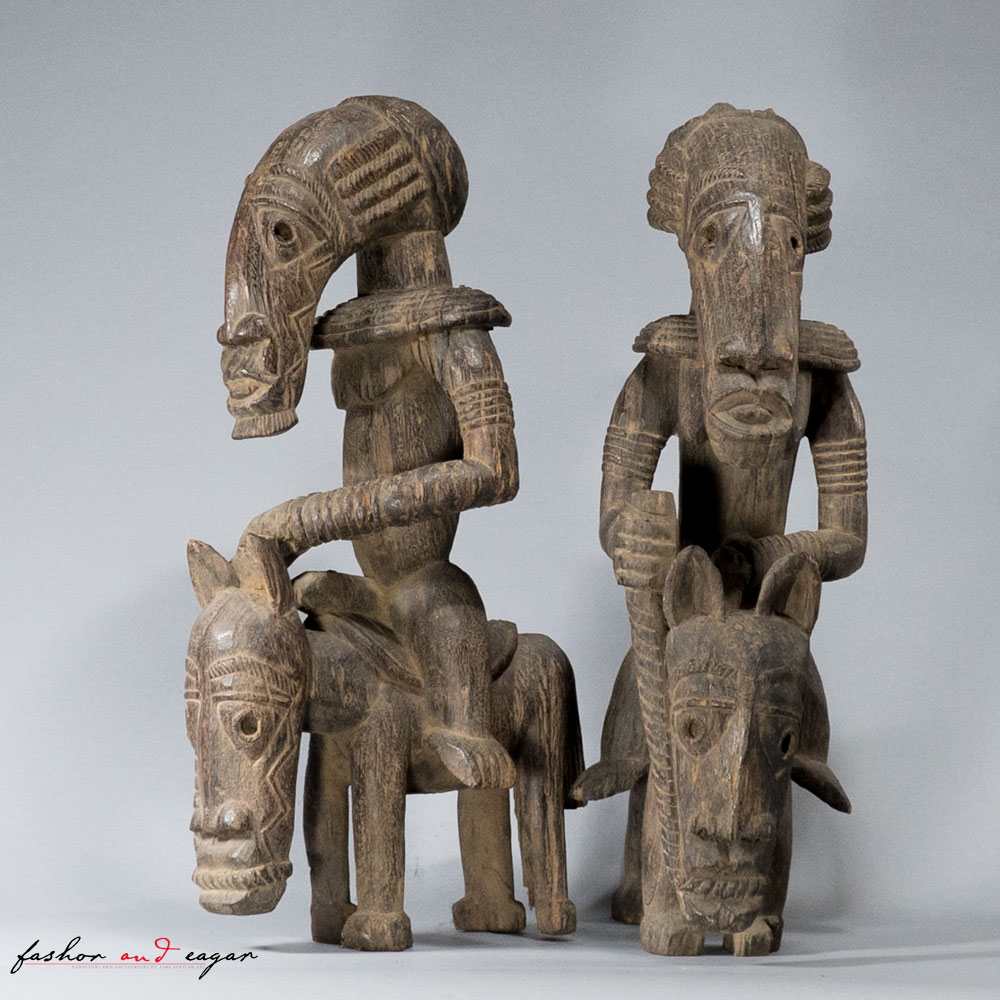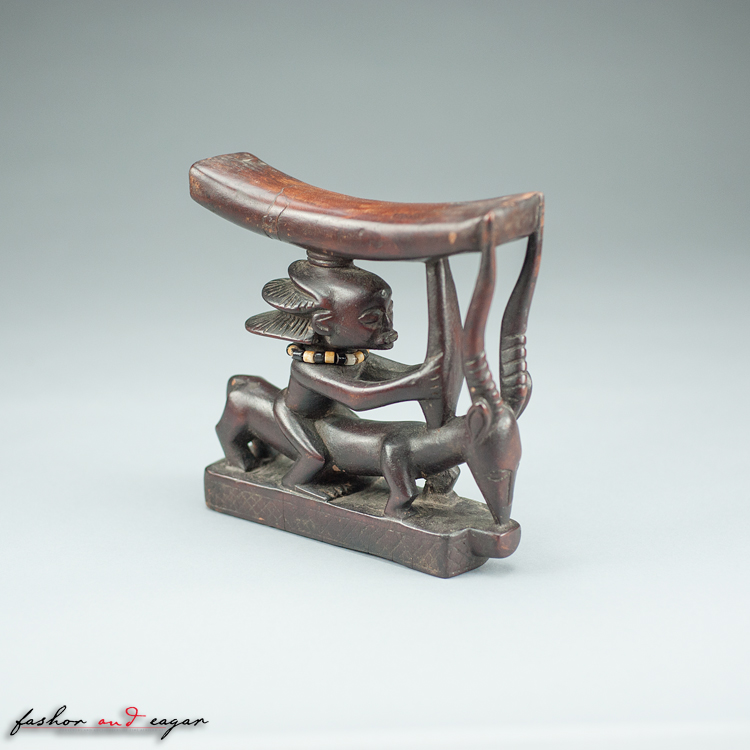
Collection
Nok Equestrian Pair
Nok Equestrian Pair
ETHNIC GROUP
Nok, Kaduna State
COUNTRY
Nigeria
MATERIAL
Wood, patina of age.
DIMENTIONS
28 inches tall x 15 inches length x 9 inches wide.
CIRCA
19th Century.
PROVENANCE
Field Collected by Mr. Petrus De Jeu
EXHIBITED
No known exhibitions
LITERATURE
No known publications
CATALOGUE NOTE
This commanding pair of wooden equestrian figures, including their horses, represent the fully cultivated Nok artistic style, illustrated here by the dramatically archetypal heads and extended, overhanging faces, the heads, as in Nok terracottas, are invariably proportionally large relative to the bodies with finely detailed features—especially the lips, mouth, and coiffure found in earlier terra cotta sculptures. Triangular eyes and perforated pupils, noses, mouths, and ears combine to depict men and women with bold, abstracted features. Sentient and exuding power, these are a pair of masterpieces of Nok sculptural art.
Nok is the earliest identified culture in Nigeria. First discovered in 1928 in the village of Nok, the Nok culture flourished between about 500 BC and about AD 200 in the area north of the meeting of the Niger and Benue rivers on the Jos Plateau. The Nok culture is an early Iron Age population whose material remains are named after the Ham village of Nok in Kaduna State of Nigeria.
Nok images in wood are almost unknown in mainstream African art narrative. The very mention of Nok conjures an image of a lost civilization whose fame is rooted in stylistic, fractured, red terracotta heads, figures, animals, and pottery shards. While there is little doubt that Nok terracotta sculptures are the earliest known sculptures from ancient Nigeria, the Nok art tradition did evolve over time to include wood, both for artistic and utility and architectural purposes. These obviously later wood sculptures were patently stylistically modelled after earlier terracotta stylistic traditions first discovered in 1943 by Bernard Fagg near the northern Nigerian village of Nok, after which the culture that produced them was named.
Many Nok pieces were sculpted subtractively in a manner similar to wood carving. This distinctive approach suggests that a comparable wood-carving tradition may have influenced them. The highly skilled Nok artisans transferred their creative skills of great beauty, power, and refinement from terracotta to wood, but on larger scales.







